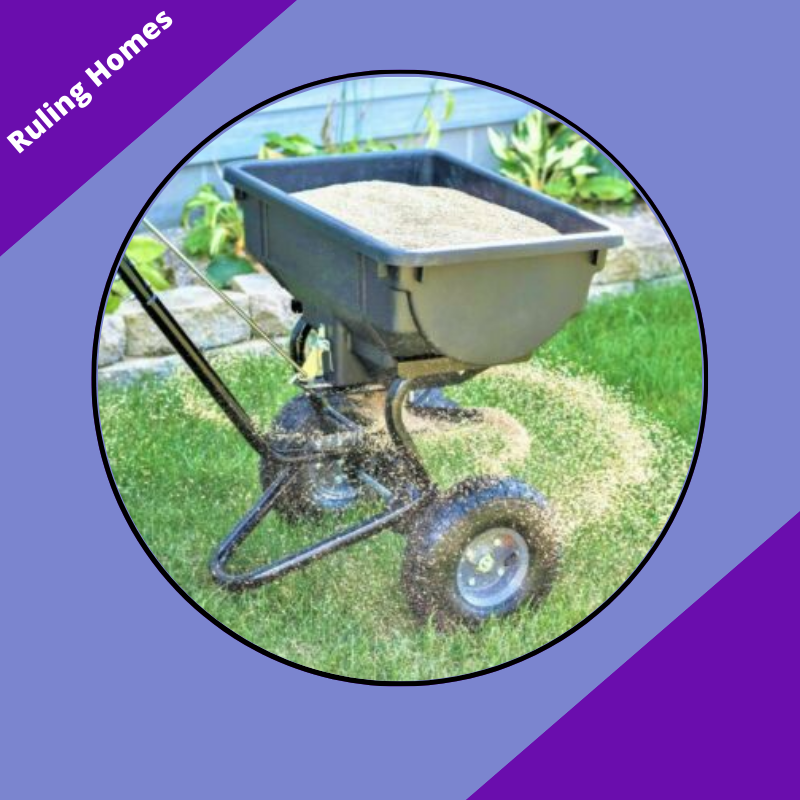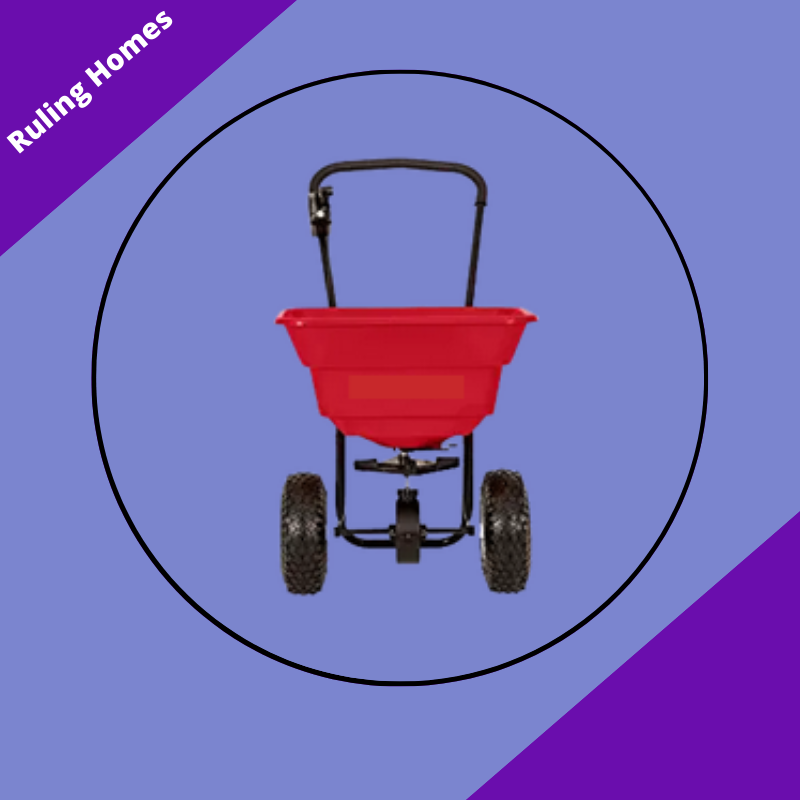Lawn fertilizer is a natural or artificial substance used to enhance the growth of lawns, fields, and plants. It provides the safe transition of plants and quick greening without exposure to any disease.
The standard materials used in lawn fertilizer are nitrogen and phosphorous. It also comes with potassium, zinc and other micronutrients. That directly configures the price and functioning of lawn fertilizers.
It consists of compact packing of synthetic plastic material. Mainly used to increase the growth of farms and fields artificially.
The lawn fertilizer with nitrogen and phosphorous lasts longer than any other type as it increases plant growth. The price of lawn fertilizer depend on the results.
A lawn fertilizer containing zinc and other artificial micronutrients is also a good option, depending on the area you are currently living.
The history of lawn fertilizer dates back to the Egyptians, Romans, and Babylonians. They were using manure, minerals, and byproducts of human nature industries such as fish processed waste to increase the growth of their farms, fields and lawns.
But later, in the mid-1800s, an English entrepreneur, John Bennet Lawes, began experimenting with the effects of artificial nutrients on farms and invented the first synthetic fertilizer.
Table of Contents
What Is The Ideal Material For A Lawn Fertilizer?
The ideal material for lawn fertilizer is nitrogen. Nitrogen is preferred because it gives long-lasting positive growth to lawns and fields.
Nitrogen-based lawn fertilizers cost more than any other type. The cheapest type contains Sulphur and iron that only gives the green color to the leaves and are not essential for growth.
The price and reliability of the lawn fertilizer depend on its usage. Also, the region where you want to put the lawn fertilizer is equally important to determine its functionality.
People concerned about environmental health may want to consider the lawn fertilizer produced away from the population. Because it uses harmful chemicals, the waste of these fertilizers is way more dangerous to any person who comes into direct contact.
What Are The Different Types Of Lawn Fertilizers?
There are four types of lawn fertilizers.
Organic Fertilizers: Organic fertilizers are made of natural and organic materials, mainly animal and human manure. They are cheap products and are considered to provide slow growth.
Nitrogen Fertilizers: It is the primary nutrient in plant growth. Used in the middle of the plant growth process. It is present in both organic and inorganic fertilizers.
Potassium Fertilizers: Potassium fertilizers provide more potent and deeper roots to plants. It also helps protect your plants from different diseases.
Phosphate Fertilizers: It is continuously used from the time you have planted the trees and grass. It is a slow and long-lasting fertilizer that improves the strength of roots and stems.
What Is The Ideal Size Of Lawn Fertilizer?
The ideal size of the lawn fertilizer depends on the area you want to be fertile with essential nutrients. It works differently for commercial and residential purposes. The more the square feet area, the more lawn fertilizer you will use in plants.
What size lawn fertilizer do I need? It depends on the usage of the lawn fertilizer. First, you need to set a reminder of 30 days to see how often your garden or lawn gets deprived of essential nutrients.
Regarding inorganic fertilizer, you will need 1 pound of inorganic lawn fertilizer for 1000 square feet. While the quantity will increase to 10 pounds for 1000 square feet when using organic fertilizer.
You might also want to consider the price of lawn fertilizer. The price depends on the quantity of the lawn fertilizer you need for your farms and fields. If the lawn in your house is massive, you will need more bags of fertilizer to provide essential growth minerals.
What Are The Use Cases Of Lawn Fertilizer?
Some other use cases of lawn fertilizer are as follows.
- Provide essentials minerals to plants
- Help in the rapid growth of farms/fields
- Provide green color
- Strengthen stems and roots
- Maintain the quality of your garden/fields
- Cost-effective artificial nutrient
Once you use the lawn fertilizer, you will come to know more use cases of this product.
When Should Fertilizer Be Applied To A Lawn?
The best time to apply lawn fertilizer to your lawn in the late spring season when grass slowly starts growing.
Does Fertilizer Grow Grass Faster?
If your lawn lacks essential minerals, fertilizer will help it grow faster than its usual growth time.
How Many Times Should I Fertilize My Lawn?
It depends upon your lawn’s growth, but you should usually spread fertilizer to your property 5-6 times per year.
Should I Water The Lawn After Applying The Fertilizer?
Suppose you use liquid fertilizer, wait until the fertilizer dries, and water the lawn after half an hour. And if you are using granular fertilizer, you can water the lawn right after spreading. Here’s the complete guide to apply lawn fertilizers.
Is It Better To Fertilize Before Or After Rain?
If it rains, it is better to wait for a day or so to get the maximum results from fertilizer.
What Are The Best Lawn Fertilizer Brands?
Here are the best lawn fertilizers:
Best overall lawn fertilizer: Scotts
Best value lawn fertilizer: Pennington
Best cost-friendly lawn fertilizer: Technaflora
Best cost-effective lawn fertilizer: Osmocote
What Is The Lifespan Of Lawn Fertilizer?
The lifespan of a lawn fertilizer depends on what type you’re dealing with. Liquid fertilizer will last for about a year, and granular fertilizer has no finite expiration date. The chemical elements increase the lifespan of lawn fertilizer, however storage is equally important in making it work the best.
The factors on which the lifespan of lawn fertilizer depends include:
- Proper storage
- Climate change
- Temperature
- Less humid environment
The average lawn fertilizer costs $120-$450 (50 pounds bag), which includes the labor. The commercial fertilizer used in lawns and gardens will have the higher average price because of their enormous size.
How Does Culture Affect The Usage Of Lawn Fertilizer?
The lawn fertilizer took off to the typical houses right after its discovery. Many people found it easy to grow their gardens and lawns with artificial minerals.
The people who live in mineral-deprived regions use lawn fertilizer most often to increase the growth of their yards and farms. Those areas where the soil is not enriched with crucial minerals have the most advantage from lawn fertilizer.
Lawn fertilizer serves different purposes in different regions of the world. People who have small gardens use lawn fertilizer uncertainly. It allows them to make their garden green and colorful.
While some people put fertilizers to grow their farms as they are doing business harvesting big crops.
What Are The Relevant Tools For Lawn Fertilizer?
Bone meal fertilizer: It comes from the residue of animal meat and is also a byproduct of slaughterhouses. It contains a heavy amount of calcium and phosphorus (best for increasing plants growth).
Bat guano fertilizer: Bat guano fertilizer is similar to lawn fertilizer as both are used to grow plants. Bat guano is enriched with bat manure and is known to be the best provider of high-intensity nitrogen and phosphorous.
Tree leaves: Tree leaves are similar to lawn fertilizer. Both are used to increase the growth of plants and trees. Don’t consider your fallen tree leaves a waste instead, use them for growing new plants.
What Are The Features Of A Superior Lawn Fertilizer?
Here are three features of the best lawn fertilizer.
Nitrogen quantity: Choosing a fertilizer with a good amount of nitrogen will help you grow your lawn as nitrogen is the primary mineral used in the process of chlorophyll.
Airtight packaging: The lawn fertilizer should be packed in an airtight bag to protect it from humidity and environmental change.
Grains: A good fertilizer should have grains that will get absorbed when put in the soil.
What Are The Parts Of Lawn Fertilizer?
The parts of lawn fertilizer include the following.
Nitrogen Chemical: Nitrogen chemical helps grow your lawn thicker and greener.
Phosphorous Chemical: This chemical promotes the growth of roots and stems.
Phosphates Chemical: it gives the strength to your plant to fight against any disease and drought.
Plastic Bag: The bag should be airtight and of high quality to fight against any condition, especially the humidity.
How Did Lawn Fertilizer Get Its Name?
It is not known how the lawn fertilizer got its name. But we know that lawn fertilizer is specifically manufactured to grow plants faster. Different countries have different names for lawn fertilizers. It is also called manure, humus, and compost in some regions of Europe and Asia.
What Is The History Of Lawn Fertilizer?
The history of lawn fertilizer goes back to the Egyptians, Romans, and Babylonians. They used to add animal manure to increase the growth of their farms and fields.
Then in 1842, an English entrepreneur, John Bennet Lawes, came up with the idea of preparing an artificial solution to enhance the growth of plants and trees. That idea was quite successful in providing rapid growth to plants.
Later, discoveries were made to modify the industry-based artificial fertilizers further, and in 1910 the Birkland-Eyed Process formed a nitrogen-based fertilizer. But that didn’t show the expected results.
Over time, in 1930, two German chemists, Fritz Haber and Carl Bosch, formed the Haber-Bosch process in which they collected nitrogen from the air and developed it into fertilizer.
Today we see the most advanced form of lawn fertilizers in which only the essential minerals are mixed into the soil to increase the root/stem strength and the greenery of the lawn.

I grew up on a small farm in New Jersey. We had a big family because my parents, my uncles and aunties all were living together on this farm so, you can imagine, it was always over crowded with people. But living in farm was really great because we had to do everything on our own and I learned so many things from my parents and uncles and aunties and that is where I found my passion for fixing things, whether it is renovating or designing, I was always there. Read more


